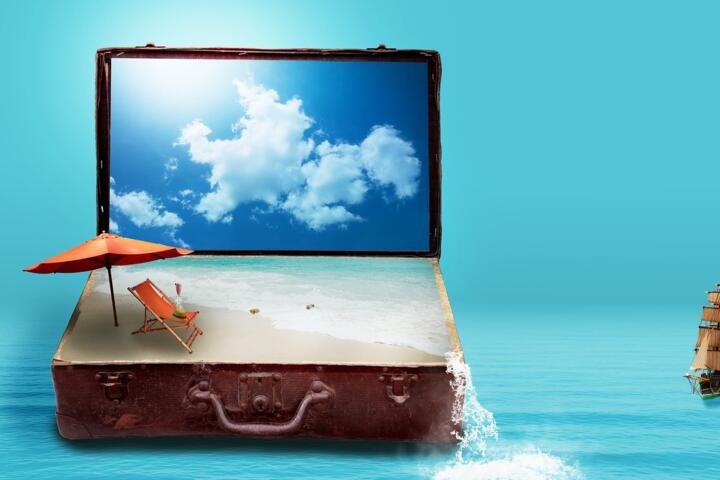Traveling is one of life’s most enriching experiences. It opens doors to new cultures, flavors, and adventures, but planning a trip can sometimes feel overwhelming. From finding the best flights and accommodations to packing efficiently and managing your budget, the logistics can overshadow the joy of exploring. The key is to approach travel strategically—so every journey is not just fun, but smooth, safe, and memorable. This guide provides practical tips and step-by-step advice for travelers who want to maximize enjoyment while minimizing stress.
Why Smart Travel Planning Matters
Many travelers underestimate the benefits of preparation. Thoughtful planning can help you:

-
Save Money: Avoid last-minute expenses and costly mistakes.
-
Reduce Stress: Know what to expect and stay organized.
-
Maximize Experiences: Prioritize activities and destinations that truly excite you.
-
Stay Safe: Prepare for emergencies and navigate unfamiliar places confidently.
Whether it’s a weekend getaway or a multi-country adventure, smart planning transforms travel from chaotic to seamless.
Step 1: Define Your Travel Goals
Before booking flights or packing bags, clarify your objectives:
-
Type of Experience: Do you want relaxation, adventure, cultural immersion, or all three?
-
Destination Selection: Research destinations that align with your goals, considering climate, season, and activities.
-
Travel Duration: Knowing how long you’ll be away helps structure your itinerary and avoid overbooking.
Pro Tip: Make a list of “must-do” activities and experiences for your destination—it ensures you focus on what truly matters.
Step 2: Budget Wisely
Finances often make or break a trip. Smart budgeting allows you to enjoy travel without worry:
-
Set a Total Budget: Include flights, accommodations, meals, transportation, activities, and souvenirs.
-
Track Expenses: Use apps or spreadsheets to monitor spending before and during your trip.
-
Look for Deals: Book flights and accommodations in advance, and consider loyalty programs or travel rewards.
-
Plan for Emergencies: Allocate funds for unexpected costs, like medical care or last-minute itinerary changes.
Example: Travelers who book flights early and choose local eateries instead of expensive tourist restaurants can save hundreds without sacrificing experience.
Step 3: Pack Strategically
Packing can be stressful, but a strategic approach keeps you prepared and light:
-
Make a Checklist: Include essentials like travel documents, clothing, toiletries, medications, and electronics.
-
Pack Versatile Clothing: Choose items that mix and match to reduce luggage.
-
Travel Light: Avoid overpacking; luggage restrictions and convenience matter.
-
Use Packing Aids: Compression bags and packing cubes save space and organize items efficiently.
Tip: Roll clothes instead of folding—they take up less space and reduce wrinkles.
Step 4: Plan Your Itinerary
An organized itinerary helps you make the most of your time:
-
Prioritize Key Attractions: Focus on experiences that align with your travel goals.
-
Balance Activities and Rest: Avoid cramming too much; include downtime to recharge.
-
Use Apps and Maps: Plan routes and public transport options to save time.
-
Stay Flexible: Leave room for spontaneous discoveries—it’s often the highlight of travel.
Pro Tip: Allocate mornings for popular attractions and afternoons for local exploration to avoid crowds and enjoy a smoother experience.
Step 5: Stay Safe and Healthy
Safety and health are crucial for a worry-free journey:
-
Travel Insurance: Covers medical emergencies, cancellations, and lost belongings.
-
Health Precautions: Vaccinations, medications, and a small first-aid kit are essential.
-
Local Research: Learn about local customs, laws, and areas to avoid.
-
Secure Documents: Keep digital and physical copies of passports, IDs, and travel confirmations.
Example: Travelers who use a money belt or hidden pouch reduce the risk of theft while keeping essentials accessible.
Step 6: Embrace Local Culture
Travel is more enriching when you immerse yourself in local experiences:
-
Try Local Cuisine: Visit street markets or local eateries for authentic flavors.
-
Learn Key Phrases: Even simple greetings in the local language go a long way.
-
Respect Customs: Understanding local etiquette shows respect and helps avoid misunderstandings.
-
Support Local Businesses: Choosing local guides and shops contributes to the community.
Tip: Keep an open mind—unexpected cultural encounters often become the most memorable moments of travel.
Step 7: Capture Memories
Documenting your journey lets you relive your experiences and share them with others:
-
Photography: Capture landscapes, architecture, and candid moments.
-
Journaling: Note your thoughts, favorite experiences, and lessons learned.
-
Collect Mementos: Small souvenirs, tickets, or postcards create tangible memories.
-
Digital Organization: Back up photos and documents to cloud storage to avoid loss.
Advice: Focus on meaningful captures rather than trying to photograph everything—quality over quantity ensures lasting memories.
Step 8: Reflect and Plan Ahead
After your trip, take time to reflect:
-
Evaluate Your Experiences: What worked well and what could be improved for future trips?
-
Share Recommendations: Provide reviews for accommodations, tours, or eateries.
-
Plan the Next Adventure: Use lessons learned to make the next trip even smoother.
Pro Tip: A post-trip reflection helps you refine your travel approach and builds anticipation for your next journey.
Conclusion
Travel is not just about reaching a destination—it’s about the journey, experiences, and memories created along the way. By defining your goals, budgeting wisely, packing smartly, planning an efficient itinerary, staying safe, embracing local culture, and documenting your adventures, you can enjoy stress-free, enriching travel.
Key Takeaway: Smart planning transforms travel from chaotic to enjoyable. When you prepare carefully and stay flexible, every trip becomes an opportunity for adventure, learning, and lasting memories.
